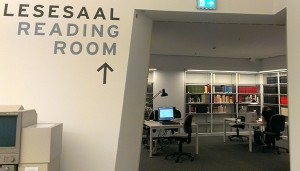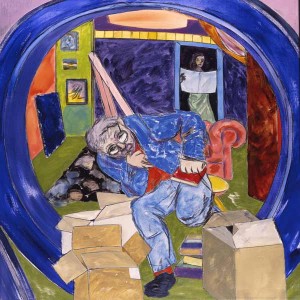We have been nudged, with some pizzazz, into a situation of good luck: at last we have an open-access library. After various construction delays, we finally had a date set to move. We were supposed to be transferring from our secluded rooms on the third floor of the Libeskind Building to the new Academy Building across the street from the museum, also built by Daniel Libeskind.

Reading room of the library and the archive at the Academy of the Jewish Museum Berlin
© Jewish Museum Berlin, photo: Mirjam Bitter
While some of us were directing the book-packers in the warehouse, others were confronting the question of how to set up this new reading room with open access. Visitors would at last be able to come and go without signing in. Missing shelf labels needed to be replaced with makeshift printouts from our classification system. Information about our opening hours had to be hung at the entrance. In addition, the transport needed to be organized of rare materials from the warehouse across the street to the new reading room. On top of all this, we could not lose track, in the midst of the moving boxes, of a set of packages containing an extensive new donation to our collection. When we finally opened our doors, we learned that there would be a press event: → continue reading
